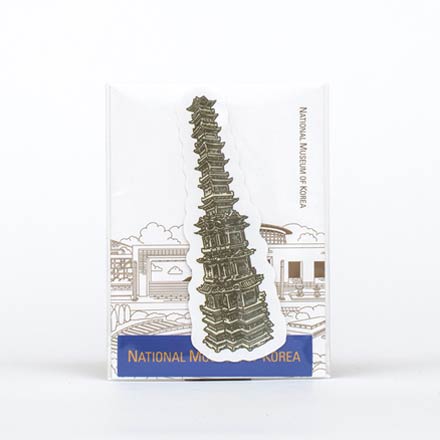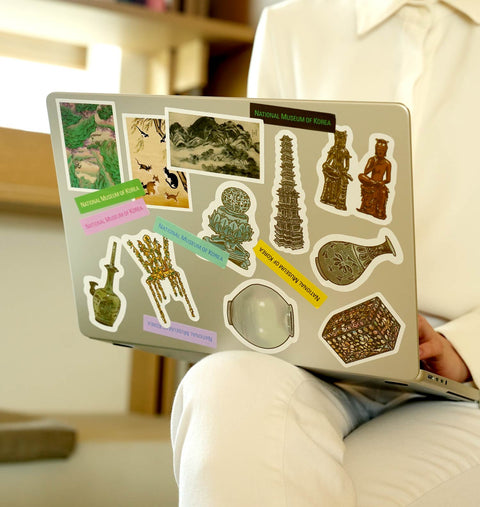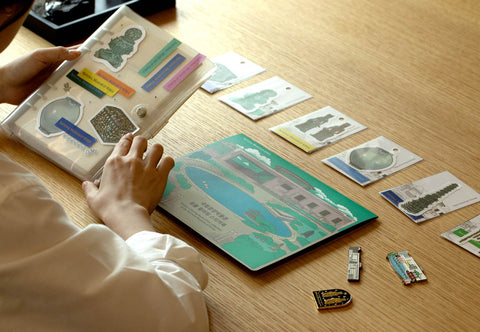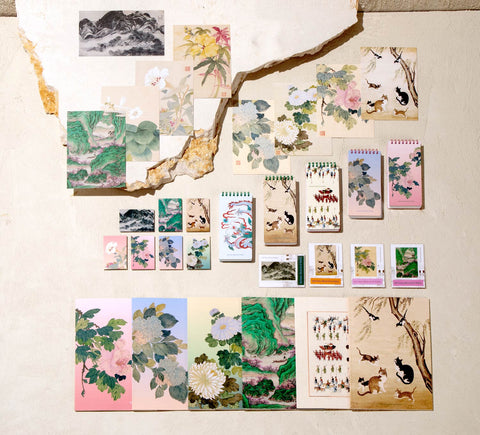








Sticker(Ten-story Stone Pagoda)
Sticker of Items from the Collection of the National Museum of Korea
(Ten-story Stone Pagoda)
Product : 77x105mm
Weight : 10g
Concept
A range of practical stationery and lifestyle products has been designed with the aim of bringing the beauty of items from the collections of the national museums into everyday life. This new range of museum souvenirs is presented in the hope that visitors can fondly remember their experience at the museum as a place where history and culture come alive. With these souvenirs featuring a variety of items from the museums’ collections, you are invited to relive your visits and cherish the memories for a long time.
Features
Each set includes two stickers. The stickers are durable thanks to a sturdy coating, and they are made with removable adhesive to ensure that no residue is left behind.
Feel free to use them without worry since they leave no marks when applied and removed.
You can stick them on portable electronics, luggage, or any other items to enjoy and collect museum artifacts in a fun way.
Relic
Pagodas were first erected in East Asia after the arrival of Buddhism. Chinese Buddhists usually built brick pagodas, while those in Japan and Korea erected wooden and stone pagodas, respectively. Most Korean stone pagodas were made from granite, but this massive ten-story pagoda is the first one known to be made from marble. It once stood on the grounds of Gyeongcheonsa Temple, located at the foot of Mt. Buso in Gwangdeok-myeon, Gaepung-gun, Gyeonggi-do Province. This pagoda is also extraordinary in terms of its form, which is much more complex than most other pagodas. Its shape is very unusual, with a three-tier base, a complex polygonal shape for the lower part (from the first to the third tier), and a square upper part. The base and the main body are elaborately decorated with carvings of Buddhas, bodhisattvas, and floral designs, and there is an inscription engraved on the body of the first story, stating that the pagoda was built in 1348 (4th year of Goryeo King Chungmok).

